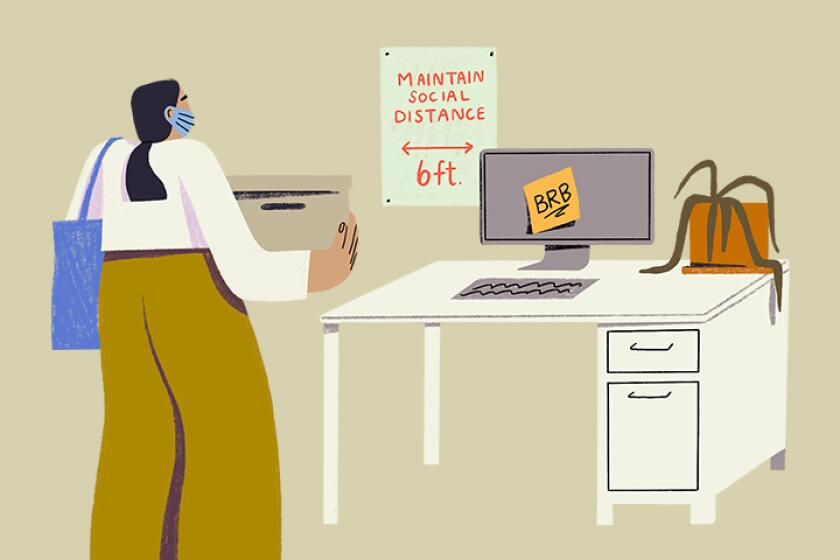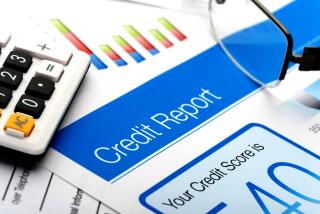Does a teenager need a Roth IRA?

- Share via
Dear Liz: Our 16-year-old daughter has been frugal since she started understanding money at about age 6. She works and makes a decent income for a high school student. Her savings are now quite substantial. She wants to open a Roth IRA while she is young and has no income tax liability. My wife and I have pensions and substantial savings but only one IRA. So we have no idea how to help her open a Roth. What should she do? She has enough money to maximize her contributions every year through high school and college and wants to take full advantage of 50 years of tax-free growth.
Answer: Contributing to a Roth IRA is an excellent way for young people to build wealth, and the earlier they can start, the better.
Traditional IRAs typically offer a tax deduction for contributions but withdrawals are taxable. Roth IRAs, by contrast, don’t offer an upfront tax deduction but withdrawals are tax free in retirement. Opting for a Roth over a traditional IRA makes sense when you expect your tax rate to be the same or higher in retirement.
A $6,000 contribution at age 26 can grow to about $105,000 by retirement age, assuming 7% average annual returns. (That’s a reasonable average for a multi-decade investment in a diversified stock portfolio.)
Make the same contribution at age 16, and the money could grow to over $210,000 by age 67. The extra 10 years of compounded gains effectively doubles the total.
To contribute to an IRA or Roth IRA, people must have earned income such as wages, salary or self-employment income.
They’re allowed to contribute 100% of their earnings during the tax year or $6,000, whichever is less. (People 50 and older can make an additional $1,000 catch-up contribution.) If your daughter earned $4,000 this year, for example, that’s the maximum she could contribute to a Roth for 2021.
Your daughter typically can’t open her own account until she’s 18, so you would need to find a brokerage that offers custodial Roth IRAs. She would be the account owner and you would be the custodian until she turns 18. Fidelity, Schwab and Vanguard are among the discount brokerages that offer custodial Roth IRAs without requiring minimum investments or charging maintenance fees.
Some of us are hoping that a year of remote work will lead to greater job flexibility. Others can’t wait to get out of the house.
Mailing checks really is a bad idea
Dear Liz: I differ with your opinion that electronic payments are far more secure than sending checks through the mail. My own personal experience sending checks for about 40 years with only one mishap (which wasn’t attributable to the USPS) provides great confidence in mail as a payment system. In contrast, not a month goes by without news of some large organization entrusted with all kinds of personal and financial information being breached in a cyberattack. If the bad guys get my credit card information, I’m out no greater than $50. I’m not also going to risk them having my bank account and routing numbers for the dubious convenience of saving a stamp. Yes, mailboxes get broken into, but until there are real penalties for inadequate computer security, corporations will continue to underfund their network security and be reactive instead of proactive. I’ll take my chances with the local thieves and not the worldwide population of black hat hackers.
Answer: You’re quite right that databases where information is stored can be vulnerable to hackers if companies don’t take the proper precautions. But avoiding electronic payments doesn’t keep your information out of those databases. Information about you is collected and stored whether you like it or not. You didn’t contribute your Social Security number, date of birth and credit account details to Equifax, for example, but chances are good you were one of the 147 million Americans whose information was exposed when that credit bureau was breached.
In contrast to some databases, electronic payment transactions have strong encryption that makes it extremely difficult for hackers to intercept and read the information. Criminals would much rather target information that’s at rest in databases than try to capture and decode it in transit.
Your checks are almost certainly being converted to electronic transactions, in any case. Few checks are physically passed between banks these days. Often a biller will take the routing and account numbers that are printed on your check and use them to request an electronic funds transfer through a clearinghouse such as the Automated Clearing House (ACH).
Because those numbers are printed on every check you send out, by the way, anyone who sees that piece of paper, from a mail thief to someone inputting the payment into a company’s computer system, could misuse that information. That’s a far bigger risk than the possibility an electronic payment could be hacked in transit.
Liz Weston, Certified Financial Planner, is a personal finance columnist for NerdWallet. Questions may be sent to her at 3940 Laurel Canyon, No. 238, Studio City, CA 91604, or by using the “Contact” form at asklizweston.com.
More to Read
Inside the business of entertainment
The Wide Shot brings you news, analysis and insights on everything from streaming wars to production — and what it all means for the future.
You may occasionally receive promotional content from the Los Angeles Times.











